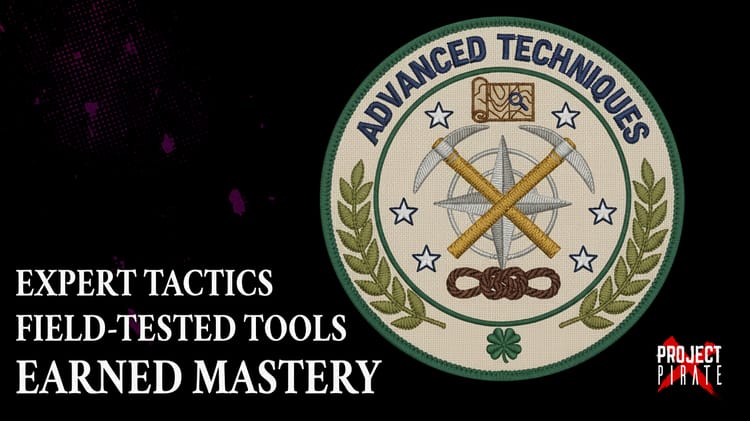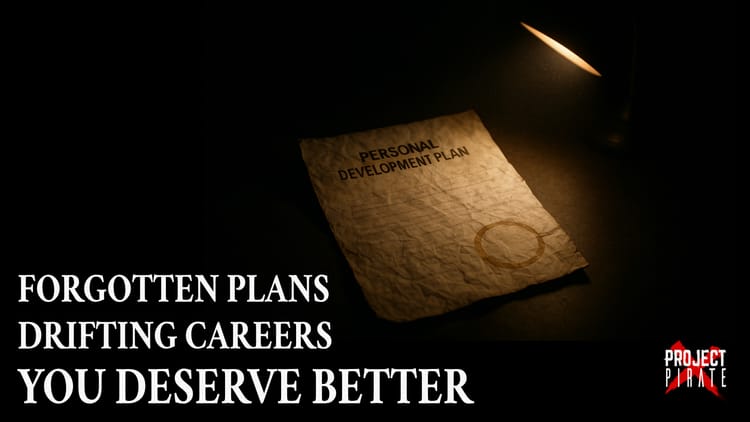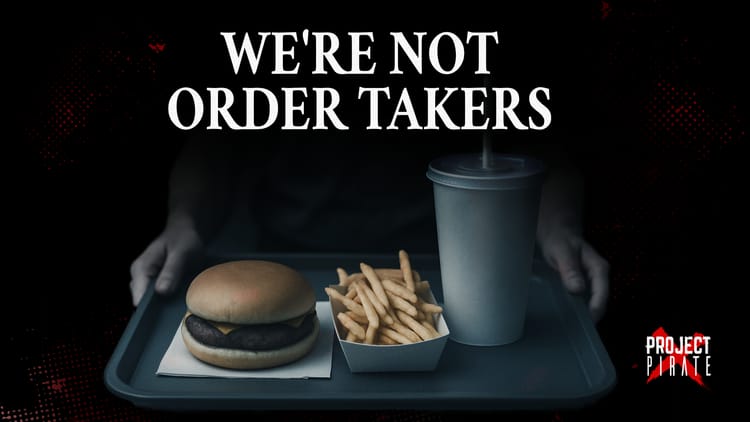Keep Your Powder Dry: The Art of Measured Leadership in Stormy Seas
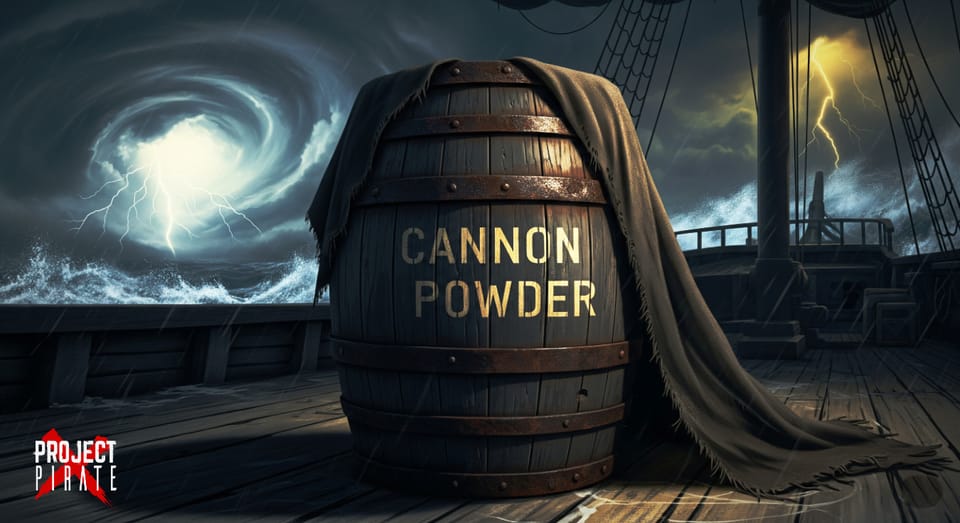
When the cannons are firing and the deck is chaos, the Captain who keeps their powder dry is the one who sails home with their ship intact.
The Origin of Wise Restraint
"Keep your powder dry" - a phrase born from the age of sail, when gunpowder was the difference between victory and defeat, between reaching safe harbour and becoming another wreck on the ocean floor. Wet powder was useless powder, and a Captain who let their ammunition get soaked in the heat of battle would find themselves defenceless when they needed firepower most.
But the wisdom runs deeper than maritime warfare. Oliver Cromwell is often credited with the phrase "Trust in God and keep your powder dry" - a reminder that while we may have faith in our cause, we must remain prepared, measured and ready to act with precision when the moment demands it.
In today's turbulent waters of organisational change, keeping your powder dry isn't about gunpowder - it's about maintaining your composure, preserving your credibility and ensuring your responses land with maximum impact when they're truly needed.
The Tinderbox of Reactive Leadership
Picture the scene: tensions are high, deadlines loom like storm clouds and someone has just delivered news that makes your blood boil. Your instinct screams to fire back immediately, to unleash every frustration you've been harbouring, to set the record straight with both barrels blazing.
This is the moment your ammunition gets wet.
"Speak when you are angry and you will make the best speech you will ever regret." This truth cuts through the fog of righteous indignation that clouds so many leadership moments. When emotions run high, our ability to communicate with precision diminishes dramatically. What feels like necessary confrontation often becomes destructive conflagration.
The leader who maintains their composure understands that not every provocation deserves immediate retaliation. Some battles are won by choosing not to fight them at all.
The Measured Captain's Approach
When the storm hits and Crew members are shouting over the wind, the seasoned Captain doesn't add to the chaos. They stand steady at the helm, their voice cutting through the noise with calm authority. This isn't weakness - it's tactical brilliance.
The Pause Principle: Before responding to inflammatory situations, the wise leader creates space. Count to ten. Take a breath. Ask yourself: "Will my response in this moment serve the mission, or just serve my ego?"
The Strategic Silence: Sometimes the most powerful response is no response at all. When others are venting their frustrations or making wild accusations, your measured silence can speak volumes. It forces them to fill the void, often revealing more about their position than any interrogation would achieve.
The Delayed Strike: When you do choose to respond, timing becomes everything. The Captain who waits for the right wind, the right position, the right moment to engage has already won half the battle.
When to Deploy Your Full Influence
Maintaining restraint doesn't mean never using your influence. The most effective leaders know exactly when their intervention will have maximum impact:
When Values Are Violated: If team members are being undermined, if ethics are being compromised, if the mission itself is under threat - this is when your carefully preserved credibility must be deployed with full force.
When Clarity Is Critical: In moments of genuine confusion or misdirection, your measured voice can cut through the chaos and redirect energy towards productive outcomes.
Consider this scenario: Your project team has spent weeks debating a technical approach while the deadline looms. Various stakeholders offer conflicting advice, and team morale is fragmenting. This is precisely when strategic intervention matters - not to micromanage the solution, but to clarify priorities and give the team permission to move forward.
When Morale Hangs in the Balance: Sometimes the Crew needs to see their Captain take a stand, to know that someone is watching the horizon and willing to fight for what matters.
Picture a transformation programme where budget cuts are rumoured and team members are quietly updating their CVs. Your visible confidence in the project's future and your willingness to advocate upward for resources can be the difference between keeping your best people and watching them abandon ship.
The Ripple Effect of Composure
Your emotional state creates weather patterns throughout your organisation. When you remain calm under pressure, it gives others permission to do the same. When you respond thoughtfully rather than reactively, you model the behaviour you want to see replicated across your Crew.
This mirroring effect is profound and far-reaching - a principle we explore in depth in "A Crew Mirrors Their Captain: Transformational Leadership in Practice". Your composure doesn't just affect the immediate situation; it shapes the cultural DNA of your entire organisation.
Psychological Safety: Team members who know their leader won't explode at the first sign of bad news are more likely to surface problems early, when they can still be solved.
Trust Building: Consistent, measured responses build credibility that serves you well when you do need to take decisive action.
Decision Quality: Clear thinking produces better outcomes. When you're not clouded by emotional reactivity, you see options that anger obscures.
The Danger of Reactive Leadership
Leaders who consistently react emotionally find their impact diminished over time:
Credibility Erosion: If you're always firing, people stop taking your shots seriously. The leader who responds to every issue with the same intensity becomes background noise.
Energy Depletion: Constant emotional firefighting exhausts not just you, but your entire team. Everyone becomes hypervigilant, waiting for the next explosion.
Strategic Blindness: When you're always reacting to immediate provocations, you lose sight of longer-term objectives and opportunities.
The Power of Intentional Pausing
Jefferson Fisher, in The Next Conversation, emphasises the transformative power of intentional communication - taking the pause to understand before responding, rather than reacting from emotional impulse. This wisdom translates directly to leadership in volatile situations.
Fisher advocates for what he calls strategic silence - the deliberate choice to pause and consider what the other person actually needs to hear, not just what you want to say. This prevents what he terms "conversational hijacking," where emotional reactions derail productive dialogue.
When faced with a challenging situation, Fisher's approach suggests asking yourself:
- What does this person/situation actually need from me right now?
- Will my response strengthen or weaken this relationship?
- What would move us forward together rather than simply expressing my frustration?
Real-World Application: Your stakeholder sends an accusatory email copying senior leadership, questioning your team's competence. Rather than immediately defending your position, Fisher's approach would have you pause and consider: What's driving their concern? What do they need to feel confident? How can you address the underlying issue rather than just the surface accusation?
This might lead to a response that acknowledges their concerns, provides clarity on your approach and invites collaboration rather than creating further conflict. The pause transforms a defensive reaction into strategic relationship-building.
Reading the Organisational Climate
The most skilled leaders develop an intuitive sense for changing conditions. They recognise the patterns that indicate when calm situations are about to turn volatile, when apparent crises will resolve naturally and when serious preparation is needed for sustained challenges.
Pattern Recognition: Learn to distinguish between genuine crises requiring your intervention and temporary disruptions that will resolve themselves. The team disagreement that feels heated today may well sort itself out by tomorrow's standup.
Stakeholder Mapping: Understand who the real decision-makers are, whose opinions carry weight, and which voices create noise without influence. This knowledge helps you target your interventions effectively.
Timing Awareness: Recognise when organisations are ready for difficult conversations and when they need processing time. Pushing for resolution when emotions are raw often prolongs rather than resolves conflict.
The Paradox of Strategic Restraint
The Captain who maintains their composure isn't passive - they're strategic. In our age of instant reactions and constant communication, measured restraint has become both rare and powerful.
When others respond impulsively to every challenge, the leader who waits for optimal timing and clear objectives doesn't just survive - they shape outcomes. This doesn't mean being indecisive or conflict-averse. It means choosing your battles with precision, ensuring every engagement serves your mission rather than simply venting frustration.
Consider the difference: the reactive leader who addresses every team complaint immediately may seem responsive, but often amplifies minor issues into major problems. The strategic leader addresses patterns of behaviour and systemic issues, creating lasting solutions rather than temporary fixes.
The Long Game
Leaders who exercise strategic restraint play a longer game than those around them. They understand that organisational memory is persistent, that reputations are built through consistent behaviour, and that the moment you most want to react emotionally is often exactly when you most need to remain composed.
Your restraint in heated moments becomes part of your leadership legend. Your measured responses during chaos become the stories people tell about effective leadership. Your ability to remain steady when others lose their composure becomes the foundation of trust that carries you through genuinely difficult periods.
Conclusion: The Strategic Advantage of Composure
Strategic restraint isn't about suppressing your authentic response - it's about choosing when that response will create the most positive impact. Your emotional reactions are indeed a finite resource, and like any valuable asset, they should be invested wisely rather than spent carelessly.
The leaders who understand this principle build something remarkable: they create environments where others feel safe to bring problems forward early, where conflicts get resolved through dialogue rather than escalation, and where teams perform at their best because they trust their leader's judgement.
When your next crisis arrives - and it will - remember that your first instinct may not be your best instinct. Take the pause. Apply the framework. Choose your moment with the same care you'd choose your words.
The storms will pass, but your reputation as a leader who can be trusted to respond wisely under pressure? That endures.
The wise Captain knows: it's not the size of your cannons that matters, but the precision of your aim when you finally choose to fire.
X Marks the Spot: Your greatest leadership victories will come not from the battles you fought, but from the battles you chose not to fight - preserving your strength for the moments that truly matter.
🏴☠️ Join the Crew - For more insights on navigating the complex waters of leadership and transformation.
